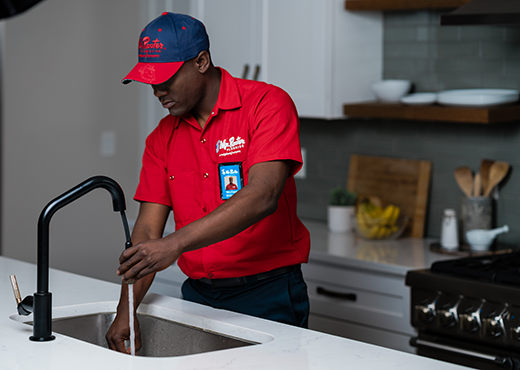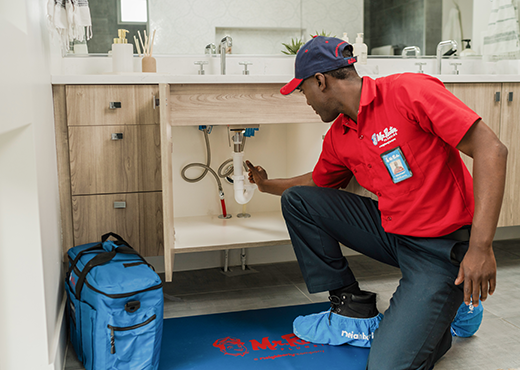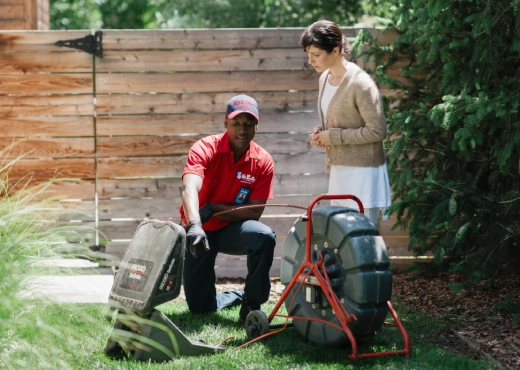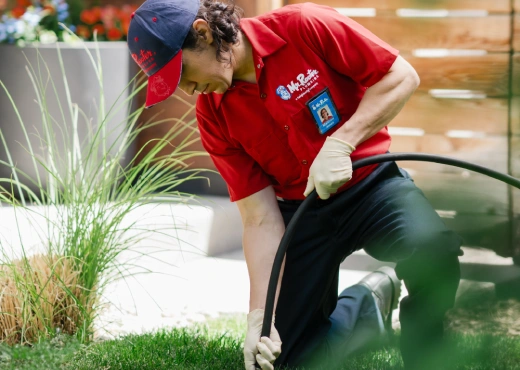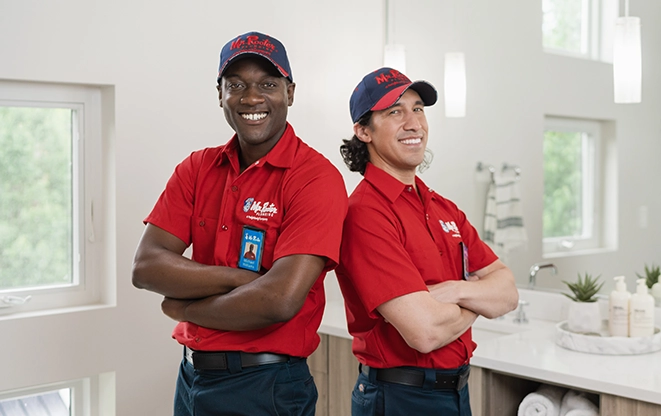They may look similar at first glance because you install them on basement floors by digging up a sump basin for the device to sit in, but they have different purposes and maintenance requirements.
A sump pump’s initial purpose is flood and general water damage prevention, as it collects groundwater and excess moisture caused by heavy rain and runoff. It has a sensor that detects rising water levels. Once it reaches a certain point, the switch kicks in and the pump starts working, forcing excess water through a discharge pipe. A sump pump installation is best suited for homes that are in areas with a high water table (the border between water-saturated and unsaturated ground). Unfortunately, this includes most of the Edmonton region.
You install a sewage ejector pump in lower levels where plumbing fixtures are built below the sewer line. It’s designed to effectively remove wastewater, so that people who live in basement suites are well-protected and live in a safe and clean environment. An Edmonton sewage ejector pump typically directly connects to your sewer line or septic line via a discharge pipe. The lower your basement sits beneath the sewer line, the more horse power your sewage ejector pump requires to effectively perform its job. Forcing the waste upward to reach the sewer or septic tank is a fight against gravity.
Maintenance
Sewage ejector pumps require frequent inspections to ensure that no debris is obstructing the float. You must also ensure the lid is sealed properly and will effectively protect you from sewer gases. When the device malfunctions, you could experience raw sewage flooding.
Types of Edmonton Sewage Ejector Pumps:
You will find different size sewage ejector pumps, varying in weight and technical specifications. Your certified plumber can inspect your home and help you decide which type will work best. We also recommend that you pick a type first before digging the corresponding sump basin because the device will need to sit well in place. If you already have an existing sump pit, we are happy to examine it before you choose the suitable type for installation. Otherwise, these are the specs to look out for:
Technical characteristics:
- Horsepower
- Gallons per hour (GPH)
Material
- Cast-iron
- Aluminum
- Thermoplastic
Pro Tip: Edmonton sewage ejector pumps spend most of their time submerged in wastewater. The more durable it is, the better. While thermoplastic types are cost-effective, heavy-duty cast iron offers higher performance and durability. A certified plumber will have to calculate the size of the pump and basin for your application, which will depend on what fixtures are draining to it and how far it has to move the waste. The higher it is, the more horsepower you will require for your basement in Edmonton.
We can help find the unit that is right for your application, some have added features, such as grinding blades or a non-clog impeller. You can count on us for a worry-free Edmonton sewage ejector pump installation.
Signs You Need Edmonton Sewage Ejector Pump Repair
Gadgets and other devices will always malfunction, reach their maximum lifespan—or worse—be poorly installed. With a mechanical device like a sewage ejector pump, you could get into very messy situations if anything happens. We specialize in sewer ejector pump maintenance, installation and repair services to ensure your systems are running smoothly. Our licensed plumbers can set your system up for success, and ensure that a lack of maintenance does not lead to faults that call for repair. Here are some common problems require will urgent sewage ejector pump repair services:
Device won’t start
If the pit or basin is filling up but the device shows no reaction, it’s likely a faulty float or a blockage. Contact your local plumber right away and don’t use your plumbing fixtures in the meantime. On other occasions, a tripped circuit breaker might be the culprit, in which case your device may need an alternative source of power.
Short Cycling
Pump systems that cycle on or off are a big nuisance. Does it appear to be ejecting although nothing is there? While it’s possibly a faulty switch, it could be a burnt out motor as well. For motors not to overheat or overwork, it’s important to ensure that there are no clogs and that you pay attention to any signals that your sewage ejector sends out. Short Cycling is often a problem caused by old age, so you might want to consider that your device has reached its maximum lifespan if you’re experiencing frequent cycling.
Strange noises
All units will have a certain noise when they are pumping. If you do hear screeching sounds or abnormal sounds while the unit is on, it’s probably struggling to break down waste and send it through the discharge pipe. Chances are that someone might have flushed a non-flushable item. To be sure your motor impeller and float aren’t obstructed or that clogs have not formed, we recommend calling your plumber.
Wastewater smell
If your sewage ejector pump starts to reek, check the vent pipe and inspect the cover lid for cracks. You may need to repair or replace the cover, or you may need other professional plumbing services.
Clogged discharge pipe
Nothing should obstruct the discharge pipe of the sewage ejector pump. Edmonton homeowners who experience frequent clogs of this type may want to upgrade to a unit that has more horsepower to effectively push waste into the sewer, so it doesn’t get stuck in the discharge pipe.
Causes of Sewage Ejector Pump Failures:
- Faulty float switch: Float switches are the best types for submerged systems, but they are highly sensitive and need frequent monitoring. As soon as water fills up the basin, the float sensor should activate the pump. If that switch shows no sign of action, it will require immediate repair.
- Unnoticed Clogs: When your system is working slower than usual, you should check the drainage pipe to see whether it’s partially clogged. This would make your device work harder until it burns out. If a clog goes unnoticed, you will risk having an overflowing basin and compromising the system’s parts.



